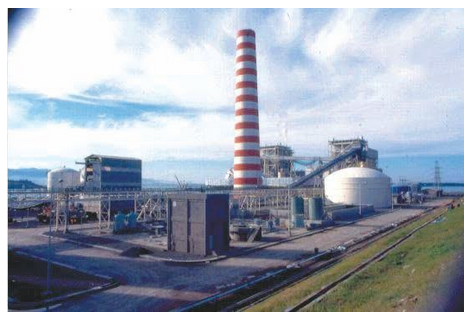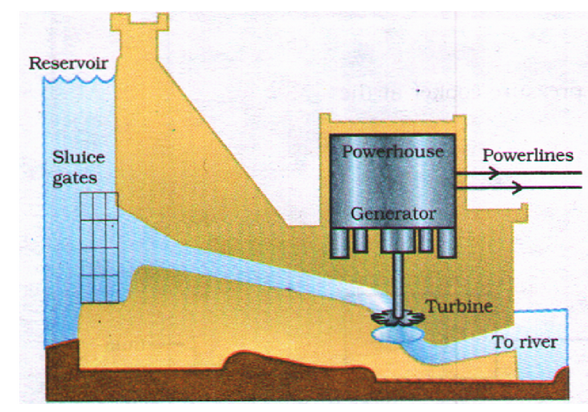Conventional Sources Of Energy
Source Of Energy of Class 10
The various types of conventional sources of energy are as follows:
FOSSIL FUELS:
Fossil fuels are the remains of the prehistoric animals or plants, burried under the earth, millions of years ago.
e.g. Coal, petroleum and natural gas.
Fossil fuels are formed in the absence of oxygen. The chemical effects of pressure, heat and bacteria convert the burried remains of plants & animals into fossil fuels like coal, petroleum and natural gas.
It was the sunlight of long ago that made plants grow, which were then converted into fossil fuels. Fossil fuels are energy rich compounds of carbon, which were originally made by the plants with the help ot sun's energy.
Types of Fossil Fuels:
The various types of fossil fuels are:
Coal
It is the most abundant fossil fuel on the Earth which is essentially carbon. It is used as a combustion fuel. The exploitation of coal as a source of energy made the industrial revolution possible. Increasing industrialization has led to a better quality of life all over the world. Coal is the principal source of heat for electricity generation and is used as a reducing agent (coke) in heavy industries like iron and steel.
|
|
Lignite (28% - 30% carbon) and Bituminous (78%-87% carbon) burn faster and release a great deal of pollutants in the atmosphere on account of their lower carbon content. Anthracite, with highest carbon content burns slowly, releases much less smoke, delivers more energy and is the best quality coal. |
Petroleum
Petroleum (also called crude oil) is a thick black liquid and is not used as fuel in its natural form. It is refined by the process of fractional distillation to obtain a number of useful components like fuel oil, kerosene, diesel oil, petrol or gasoline and petroleum gas. On liquefaction, petroleum gas changes into a liquid which is called liquefied petroleum gas (LPG). It is used for cooking.
|
|
Natural gas is also a fossil fuel usually found underground near an oil source. It is the cleanest burning fossil fuel as its gives off less carbon dioxide than coal and oil on burning. It is used as CNG (Compressed Natural Gas). |
Efficiency and use of Fossil Fuels:
The pollution caused by burning fossil fuels can be reduced by increasing the efficiency of the combustion process and using various techniques to reduce the escape of harmful gases and ashes into the surroundings. Besides being used directly for various combustion process, fossil fuels are the major fuels used for generating electricity, a form of energy which has become a necessity in today’s scenario.
THERMAL POWER PLANT:
A “thermal” power plant as the name suggests generates electric power from large amount of heat produced by burning fossil fuels, i.e., coal and petroleum. Fossil fuels are burnt in large amounts in power stations to heat up water to produce steam which further runs the turbine to generate electricity. Transmission of electricity is more efficient than transporting coal or petroleum over the same distance. Therefore, many thermal power plants are set up near coal or oil fields.

Thermal Power Plant
HYDRO (HYDEL) ENERGY:
Solar energy appears in the form of energy of water flowing in the rivers which is obvious from the water cycle in nature.
Hydro electric power plant:
Hydro electricity is the electricity produced from the kinetic energy of flowing water and a plant which generates hydroelectricity on a large scale is called hydro electric power plant.
A quarter of our energy requirement in India is met by hydropower plants. Since there are very few waterfalls which could be used as a source of potential energy, hydro power plants are mostly associated with dams.

A schematic view of a hydro electric power plant
Steps for generation of hydro electricity
The various steps for generation of hydro electricity are :
(a) Water is collected in storage dams (high rise structure) where kinetic energy of flowing water is transformed into its potential energy.
(b) Water from the dam is allowed to fall through pipelines over the blades of a turbine at the bottom of the dam. The potential energy of water changes into its kinetic energy which is transferred to the turbine.
(c) Moving turbine changes the kinetic energy of water into electricity.
Advantage of Hydel Power:
- The process of hydel power does not cause any environment pollution.
- The moving water needed for the purpose is available free of cost.
- Water energy is a renewable source of electrical energy which will never get exhausted.
- The construction of dams on rivers helps in controlling floods and in irrigation.
Limitations of Hydel Power:
- Moving or flowing water is not available at all places. It is available near the sites of flowing rivers.
- To generate a reasonable amount of electricity from water, fast moving water should be available in large quantities.
- The construction of dam on a river disturbs the ecological balance in downstream area of the river.
- The soil in the downstream area may become poor in quality because there were no annual floods to deposit nutrient rich silt on the bank of the river. Therefore there may be ecological problems.
- Introduction
- What Is A Good Source Of Energy?
- Classification Of Source Of Energy
- Conventional Sources Of Energy
- Improvement In The Technology For Using Conventional Sources Of Energy
- Alternative Or Non-Conventional Sources Of Energy
- Environmental Consequences Of Exploiting Sources Of Energy
- How Long Will An Energy Source Last Us?
- solved questions
- Exercise 1
- Exercise 2
- Exercise 3
- Exercise 4










